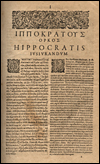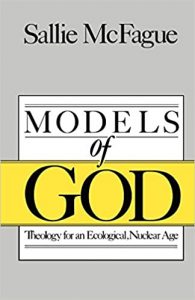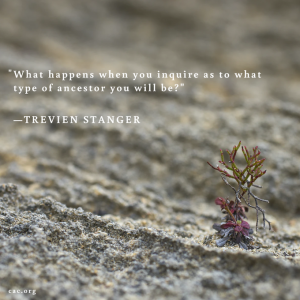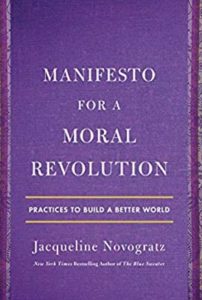May 23, 2020
The Hippocratic Oath (Ορκος) is perhaps the most widely known of Greek medical texts. It requires a new physician to swear upon a number of healing gods that he will uphold a number of professional ethical standards. It also strongly binds the student to his teacher and the greater community of physicians with responsibilities similar to that of a family member. In fact, the creation of the Oath may have marked the early stages of medical training to those outside the first families of Hippocratic medicine, the Asclepiads of Kos, by requiring strict loyalty.
Over the centuries, it has been rewritten often in order to suit the values of different cultures influenced by Greek medicine. Contrary to popular belief, the Hippocratic Oath is not required by most modern medical schools, although some have adopted modern versions that suit many in the profession in the 21st century. It also does not explicitly contain the phrase, “First, do no harm,” which is commonly attributed to it.
Hippocratic Oath
‘I swear by Apollo the physician, and Asclepius, and Hygieia and Panacea and all the gods and goddesses as my witnesses, that, according to my ability and judgement, I will keep this Oath and this contract:
To hold him who taught me this art equally dear to me as my parents, to be a partner in life with him, and to fulfill his needs when required; to look upon his offspring as equals to my own siblings, and to teach them this art, if they shall wish to learn it, without fee or contract; and that by the set rules, lectures, and every other mode of instruction, I will impart a knowledge of the art to my own sons, and those of my teachers, and to students bound by this contract and having sworn this Oath to the law of medicine, but to no others.
I will use those dietary regimens which will benefit my patients according to my greatest ability and judgement, and I will do no harm or injustice to them.
I will not give a lethal drug to anyone if I am asked, nor will I advise such a plan; and similarly I will not give a woman a pessary to cause an abortion.
In purity and according to divine law will I carry out my life and my art.
I will not use the knife, even upon those suffering from stones, but I will leave this to those who are trained in this craft.
Into whatever homes I go, I will enter them for the benefit of the sick, avoiding any voluntary act of impropriety or corruption, including the seduction of women or men, whether they are free men or slaves.
Whatever I see or hear in the lives of my patients, whether in connection with my professional practice or not, which ought not to be spoken of outside, I will keep secret, as considering all such things to be private.
So long as I maintain this Oath faithfully and without corruption, may it be granted to me to partake of life fully and the practice of my art, gaining the respect of all men for all time. However, should I transgress this Oath and violate it, may the opposite be my fate.’
Translated by Michael North, National Library of Medicine, 2002.
What Happens When You Plant a Tree?
For all its presumed innocence, this way of life lived by well-off North Americans is both unjust to those who cannot attain this lifestyle and destructive of the very planet that supports us all.
—Sallie McFague
Sallie McFague was an American feminist Christian theologian, best known for her analysis of how metaphor lies at the heart of how we may speak about God. She applied this approach in particular to ecological issues, writing extensively on care for the earth as if it were God’s “body.”
‘In this award-winning text, theologian Sallie McFague challenges Christians’ usual speech about God as a kind of monarch. She probes instead three other possible metaphors for God as mother, lover, and friend.’
Center for Action & Contemplation
While we may continue to practice physical distancing from other humans, most of us can still safely spend time in nature. The Journal of Health Psychology confirms what Franciscans and mystics have long known: interacting with nature is a great stress reliever. Just thirty minutes of gardening lowers the cortisol released during stress-induced fight-or-flight responses. Today’s practice, written by poet, writer, and educator Trevien Stanger for the book Order of the Sacred Earth, invites us to make a very specific contemplative contribution by planting trees.
Ethnobotanist, author, and Potawatami elder Robin Kimmerer asserts, “We need acts of restoration, not only for polluted waters and degraded lands, but also for our relationship to the world. We need to restore honor to the way we live, so that when we walk through the world we don’t have to avert our eyes with shame, so that we can hold our heads high and receive the respectful acknowledgment of the rest of [the] earth’s beings.” [1] . . .
I contend that every individual can participate in [the] Great Turning, and that one of the great challenges of our time is for each of us to figure out how and where we plug into this psycho-spiritual current. . . . I, for one, plant trees. . . . In my more recent work as an environmental studies professor at a community college in Vermont, I’ve had a hand in planting just shy of 100,000 trees over the past 12 years. . . .
What happens when you plant a tree? What happens when you wield a shovel in one hand (a human artifact) and a tree (a provisional mystery) in the other? What happens when you dig a hole (a Kali-like destruction) and plant a tree within it (an act of creativity)? What happens when you learn about your local ecology not just as an observer, but also as a participant? What happens when you embrace the wildness of a tree-being and integrate it into the semi-wild streets and streams of your local community? What happens when you crack open your isolated sense of self and plant within your heart this symbol of our ever-branching inter-being? What happens when you consider your actions in terms of your ecological and cultural legacy? What happens when you move beyond your concerns of today and inquire as to what type of ancestor you will be? Nelson Henderson posits that “. . . one true meaning of life is to plant trees under whose shade you do not expect to sit.” [2] Under whose shade do you sit beneath today? Whose shade shall you help gift for tomorrow?
[1] Robin Wall Kimmerer, Braiding Sweetgrass: Indigenous Wisdom, Scientific Knowledge, and the Teachings of Plants (Milkweed Editions: 2013), 195.
[2] Wes Henderson shared his father’s advice in Under Whose Shade: A Story of a Pioneer in the Swan River Valley of Manitoba (W. Henderson & Associates: 1986, ©1982).
Trevien Stanger, “Tree Planter,” Order of the Sacred Earth: An Intergenerational Vision of Love and Action, Matthew Fox, Skylar Wilson, and Jennifer Listug (Monkfish Book Publishing Company: 2018), 184-186.
Image credit: Legend of St. Francis: 15. Sermon to the Birds (fresco detail), artist unknown, formerly attributed to Giotto di Bondone, c. 1297–1299, Upper Basilica of San Francesco d′Assisi, Assisi, Italy.



